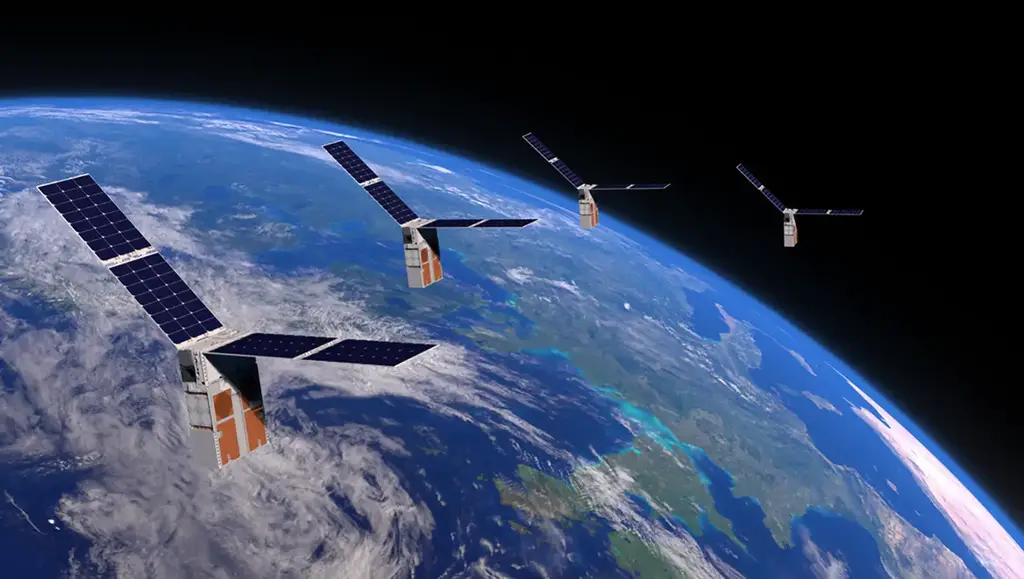The Starling spacecraft swarm has completed its primary mission, demonstrating advances in autonomous satellite operation and navigation, setting the stage for future joint space traffic management with SpaceX. After ten months in orbit, the Starling spacecraft swarm successfully demonstrated the key objectives of its primary mission, representing significant advances in swarm configuration capabilities.
One day, swarms of satellites could be used to explore deep space. A network of autonomous spacecraft could self-pilot, conduct scientific experiments, and maneuver to respond to environmental changes without the burden of significant communication delays between the swarm and Earth.
“The success of Starling’s first mission is a landmark achievement in the development of autonomous small spacecraft networks,” said Roger Hunter, NASA’s Small Spacecraft Technology Program Manager at NASA’s Ames Research Center in California’s Silicon Valley. “The team has been very successful in achieving our goals and adapting to challenges.”
job sharing
The Distributed Spacecraft Autonomy (DSA) experiment aboard Starling demonstrated the ability of a swarm of spacecraft to optimize data collection in a group. CubeSats analyzed the Earth’s ionosphere, detecting interesting events and reaching consensus on the analysis approach between each satellite.
By sharing observational work within the group, each spacecraft can “share the load” and observe different data or work together to provide deeper analysis, reducing human workload and keeping the spacecraft operational without needing to send new commands from Earth.
The success of the experiment means Starling is the first team to autonomously share information and operational data between spacecraft to create more efficient operating plans, and is the first demonstration of a fully distributed onboard reasoning system that can quickly respond to changes in scientific observations.
Group communication
A swarm of spaceships needs a network to communicate with each other. The Mobile Ad-hoc Network (MANET) experiment automatically established a network in space, allowing the group to transmit commands and data between themselves and the ground and share information about other experiments together.
The team successfully completed all MANET experiment objectives, including demonstrating guidance and data commands for a spacecraft experiencing space-to-ground communication issues, a valuable asset of a collaborative spacecraft group.
“MANET’s success demonstrates the power of the swarm,” said Howard Cannon, NASA Ames Starling project manager. “For example, when a spacecraft’s radio communications were lost, we ‘landed’ the spacecraft from the other direction, sending commands, software updates and other important information to the spacecraft from another member of the swarm.”
Autonomous herd navigation
Navigating and operating in relation to each other and the planet is an important part of creating a spacecraft swarm. The Starling Formation Flying Optics Experiment, or StarFOX, uses star trackers to detect another swarm member, another satellite, or space debris against the stars and then estimate each spacecraft’s position and speed.
The experiment is the first ever published demonstration of this type of swarm navigation, including the ability to track multiple swarm members simultaneously and the ability to share observations between spacecraft, increasing accuracy in determining each swarm member’s orbit.
Towards the end of mission operations, the swarm was moved to a passive safety ellipse, and in this form the StarFOX team was able to achieve a revolutionary milestone by demonstrating the ability to autonomously predict swarm trajectories using only intersatellite measurements from spacecraft star trackers.
Management of herd maneuvers
The ability to plan and execute maneuvers with minimal human intervention is an important part of developing larger satellite swarms. Autonomously controlling the trajectories and maneuvers of hundreds or thousands of spacecraft saves time and reduces complexity.
The Orbit Reconstruction and Maintenance Experiments (ROMEO) system verifies the planning and execution of onboard maneuvers by evaluating the spacecraft’s orbit and planning the maneuver to a new desired orbit.
The experimental team has successfully demonstrated the system’s ability to detect and plan for a change in orbit and is working to improve the system to reduce fuel usage and demonstrate maneuverability. The team will continue to adapt and improve the system as the Starling mission expands.
ride together
Now that the core objectives of the Starling mission have been met, the team will move on to an expansion of the mission known as Starling 1.5, testing space movement coordination in partnership with SpaceX’s Starlink group, which also has autonomous maneuvering capabilities. The project will investigate how groups controlled by different users can share information through a location hub to avoid possible conflicts.
“Starling’s partnership with SpaceX is the next step in managing large spacecraft networks and understanding how two autonomously maneuvering systems can operate safely in close proximity to each other. “As the number of spacecraft in operation increases each year, we must learn how to manage orbital traffic,” Hunter said. said.













